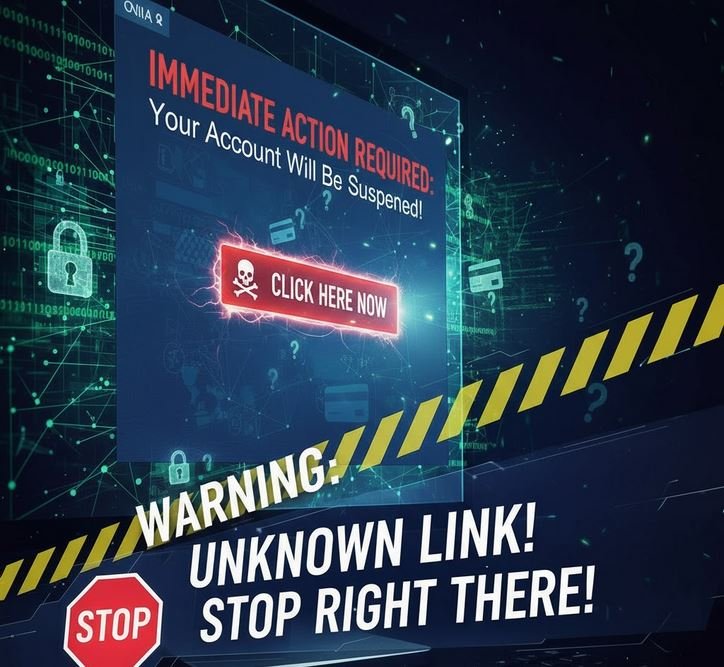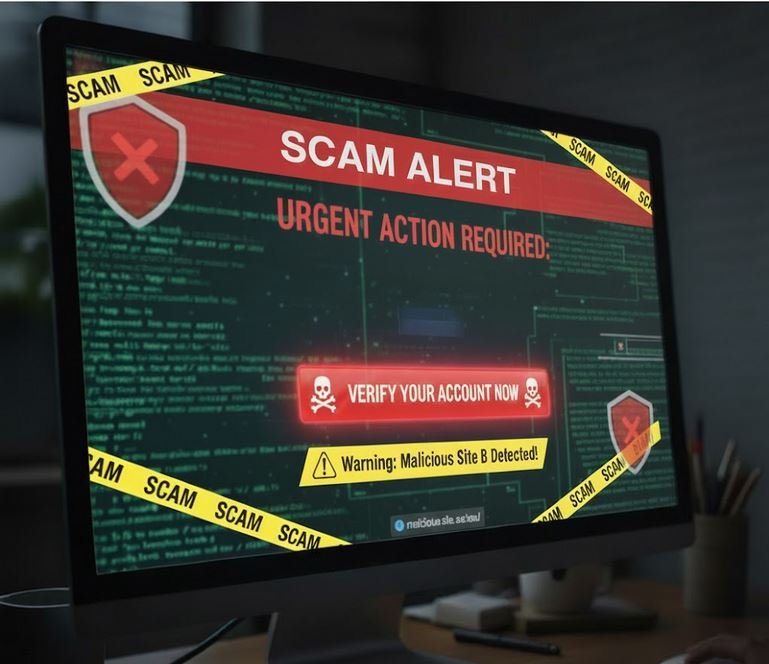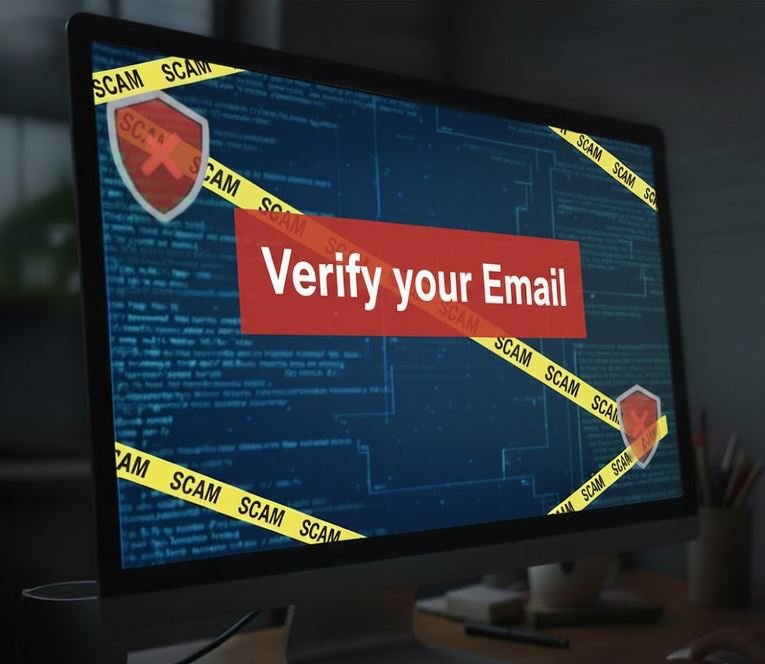
The Invisible Threat: What Happens When You Click?
Clicking a suspicious link in an email, especially one from an unknown sender, is one of the quickest ways to compromise your digital security. The consequences can be severe and immediate:
1. Phishing Scams and Data Theft

2. Malware and Virus Downloads
3. Account Takeover
4. Email Validation

How to Become a Digital Detective: Spotting a Malicious Link
The good news is that most phishing and malware links have tell-tale signs. Before clicking any link in an email you weren't expecting, engage your inner skeptic and follow these steps:
Sender's Address
Description: The email might appear to be from Amazon or PayPal, but the actual email address is gibberish or a slight misspelling (e.g., support@amazzonn.com).
What to Do: Check the full email address, not just the display name. Look for spelling or domain errors.
Description: The email begins with "Dear Customer" or "Valued Member" instead of your actual name. Legitimate companies almost always personalize communication.
What to Do: Be wary of any message that feels impersonal.
Urgency/Threats
Description: The email uses extreme language to create panic: "Your account will be suspended in 2 hours!" or "Immediate action required!"
What to Do: Scammers use panic to bypass your logical thinking. A real company will give you ample time to respond.
The Hyperlink Itself
Description: The text of the link says "Click Here to Login." Still, when you hover your mouse over it (without clicking!), the URL displayed in the bottom corner of your browser/email app is completely different and suspicious.
What to Do: ALWAYS hover your mouse over the link and inspect the actual destination URL before clicking.
Spelling and Grammar
Description: The email is riddled with errors, strange formatting, or nonsensical sentences.
What to Do: Professional companies proofread their communications. Poor grammar is a massive red flag.
Your Action Plan: Three Rules to Live By
To maintain a secure digital life, adopt these three non-negotiable rules for dealing with unexpected emails and links:
Hover, Don't Click: Always hover your mouse pointer over any link to see its destination URL. If the URL doesn't match the company it claims to be from, delete the email.
2. Go Direct, Not Via Link: If an email (even one that looks legitimate) claims there's an issue with your account (e.g., your bank, Netflix, or utility company), do not click the link in the email. Instead, open a new browser tab and manually type the company's official website address. Log in there to check for any messages or alerts.
3. Use Multi-Factor Authentication (MFA): Even if a scammer steals your password, MFA (a text code, app notification, or hardware key) will prevent them from logging into your account. Enable it everywhere.

In the digital world, vigilance is the ultimate defense. The moment you see an unknown link, pause, think, and remember: it's better to be safe than sorry. Your digital security is worth the extra few seconds of scrutiny.
 Like
0
Like
0
 Dislike
0
Dislike
0
 Love
0
Love
0
 Funny
0
Funny
0
 Angry
0
Angry
0
 Sad
0
Sad
0
 Wow
0
Wow
0